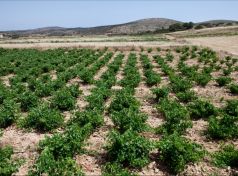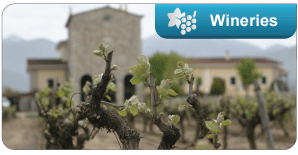The “goblets”
“If you take Greece apart piece by piece all that you will be left with in the end is an olive tree, a vine, and a ship”, wrote Odysseas Elytis, the Nobel laureate poet Odysseas Elytis. Nothing could be truer and nothing could be more easily proven! This is precisely what visitors on the plane arriving at or departing from Athens’ main airport see of Greece in the daylight: a land juxtaposed next to the deep blue of the Aegean Sea and its ships; a land composed of scattered, rippling verdant carpets of olive trees and, above all, vineyards with their vines in neat rows of what appears to be small bushes. Those are the “goblets”, vines of the Savvatiano grape variety, mostly in the vineyards of Attiki.
This hot and dry area of Mesogia (called thus because it extends in the middle between the center of Athens and the coast) is a typical example of vine pruning and training into “goblets” the Savvatiano variety -the one particularly associated with this type of pruning grape vines.
Up until a few decades ago, goblets (or goblet-shaped plant arrangement) dominated over other vine pruning techniques in most of Greece’s areas. The main steps of goblet pruning are as follows:
• The trunk of the vine is pruned back and kept relatively short
• On the head lump of the trunk vine dressers train the few permanent branches (cordons) to resemble a goblet by spur pruning them
• The leafing of the vine is then trained to the shape of a “bush”.
Pruning vines into goblets is best suited to areas which are rather arid and receive a high amount of sunlight and to vineyards where the main tasks are done by hand. Within the goblet-shaped bush vine’s thick foliage grapes are sheltered from high temperatures and direct exposure to the sun. Sadly, the vineyards whose vines are pruned into goblets are increasingly becoming rarer since linear planting arrangements are now widespread and even dominate in some winegrowing zones. Still, in many areas pruning and training grape vines into goblets is an irreplaceable technique, often entailing disciplined spur pruning and constituting the catalyst in the creation of the new wines of Greece.



